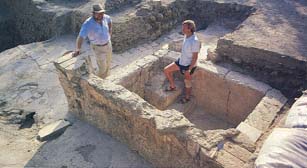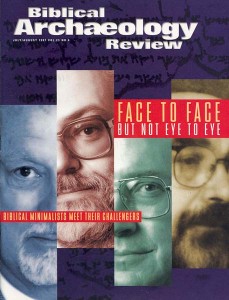DNA Analysis Sheds New Light on Oldest Profession at Ashkelon

The latest scientific techniques using DNA analysis have enabled us to conclude that the fourth- to sixth-century A.D. building at Ashkelon we confidently identified as a bathhouse also served as a brothel.1
Its identity as a bathhouse of the late Roman period was never in doubt. Its architecture included a hypocausta and a tub. The real question was, Did it also serve as a brothel? During this period there is ample textual evidence to indicate that “mixed bathing” led to more than just cleanliness. One author, writing in the time of Nero, describes a father who went to the baths, leaving one child at home, only to return from the baths as the prospective father of two more. The poet Martial wrote that the “bathman lets you in among the tomb-haunting whores only after putting out his lantern.”2
Our suspicions that the Ashkelon bathhouse might also have been a brothel were aroused by the Israeli archaeologist and epigraphist Vasilios Tsaferis, who read a tantalizingly incomplete Greek inscription scrawled on the side of the tub as “Enter, enjoy and …” But the epigraph was too short to be decisive.
Already a library member? Log in here.
Institution user? Log in with your IP address.

